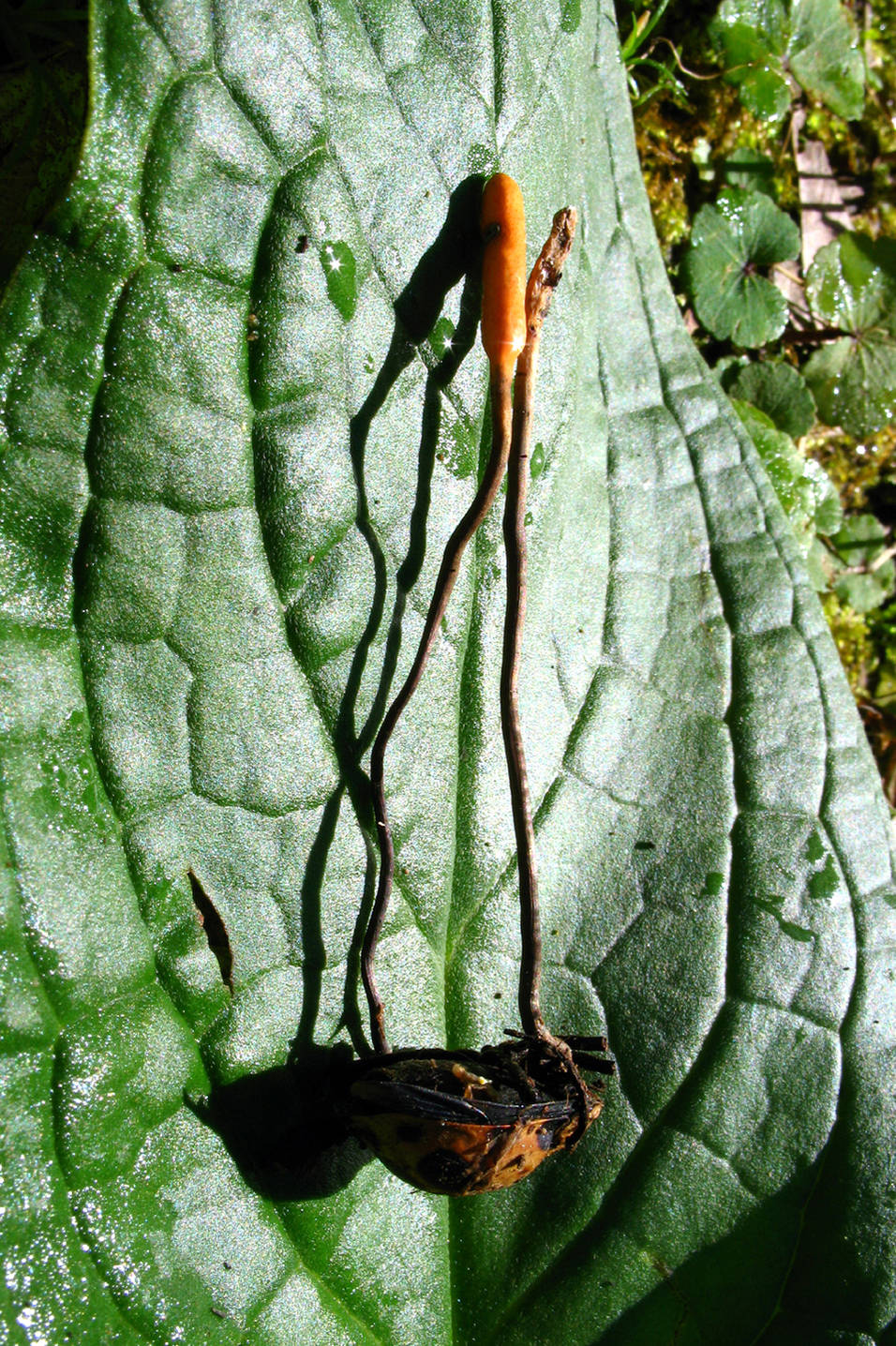
Local name: No local name known
Edibility: Too inconspicuous and rare for culinary purposes.
Habitat: On stinks bugs (Hemiptera: Pentatomoidea) loose in the leaf litter or slightly buried in soil.
Description: Stroma:Usually solitary but multiple on large hosts, 25-100 mm long, 0.5-1.0mm across, blackish brown, becoming pinkish red 5-10 mm below the perithecial head which is pinkish red to salmon pink or orange-yellow, 5-20 mm long x 3-5 mm wide. Perithecia: Immersed, hyaline-walled, oblique with a curved neck, 550-800 µm long x 150-200 µm wide. Ostioles: Visible as slightly darker dots, usually plane with the surface. Asci: Elongate-cylindric, up to 800 µm long x 7-8 µm diam., 8-spored. Ascospores: Breaking easily into 64 part-spores (sometimes slightly fewer). Part-spores: Cylindric or slightly barrel-shaped, ends blunt, 9.5-15 µm long x 1.5-2 µm wide.
Comments: This species has a wide distribution in East Asia and can be found in large numbers in Japan and South Korea. In tropical countries (including Bhutan) it is generally only found as solitary specimens. In Bhutan it is found in sub-tropical forests below 2200 metres.


